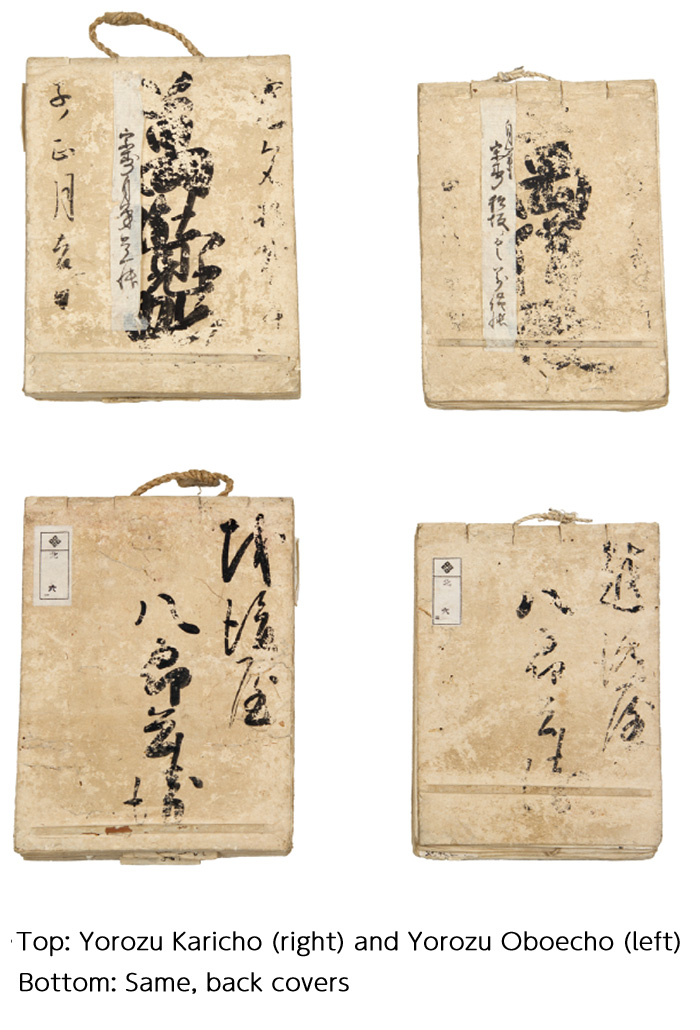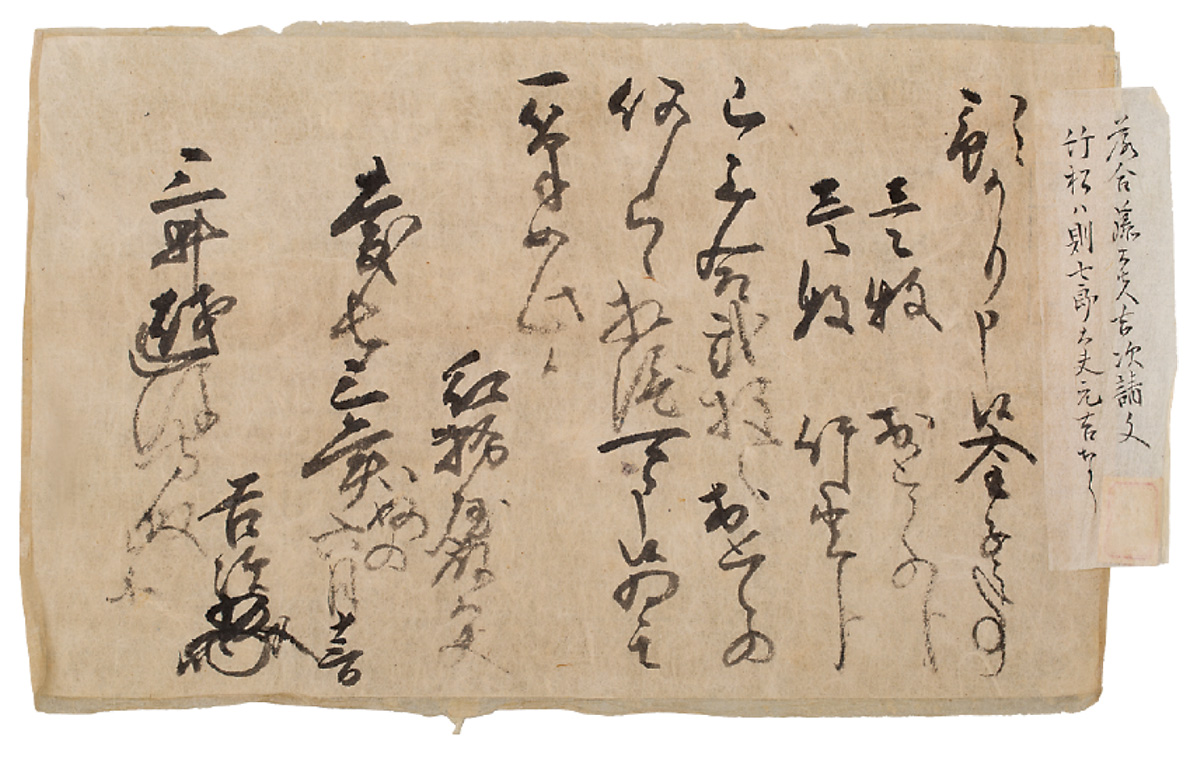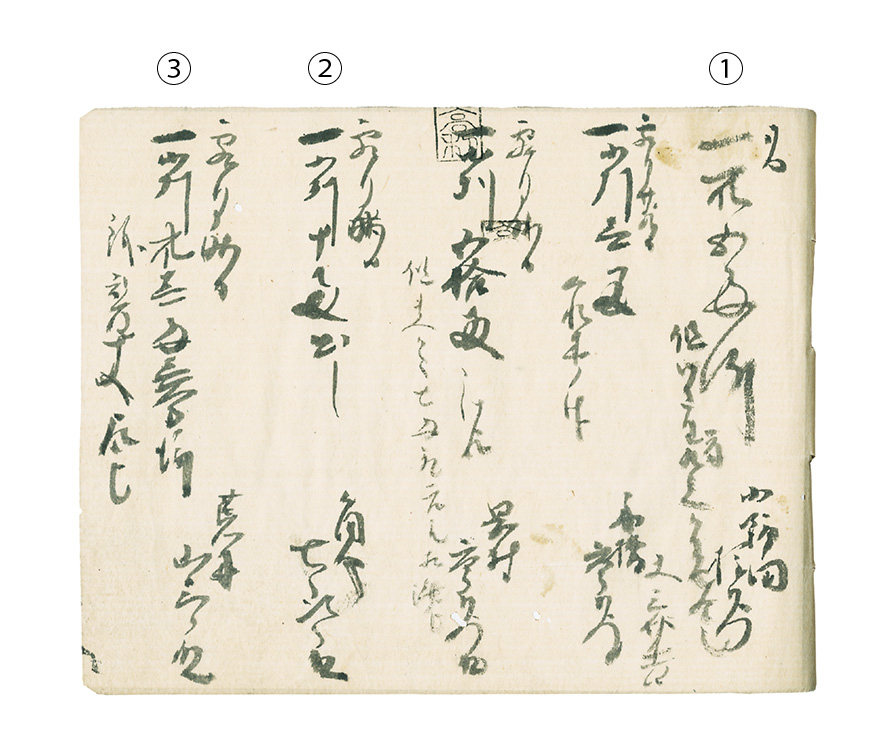02 Takatoshi of Matsusaka

Ise Merchants, Matsusaka Merchants
Traditionally, Ise Province (present day Mie Prefecture) has been a major hub for commerce and distribution. There were merchants active in Southeast Asia within the Kadoya family that can be seen in the historical records (Yorozu Karicho). Entering the early modern period, due to the so-called “closed country” (sakoku) policy foreign trade was restricted. In light of these circumstances, Ise merchants quickly moved into the new market of Edo and-alongside Omi merchants (from present day Shiga Prefecture)-became mainstays of commerce in Edo.
Takatoshi’s hometown of Matsusaka developed during the age of Toyotomi Hideyoshi (late 16th century). It was still a somewhat new city, and during these years Matsusaka merchants naturally competed with one another to open shops in Edo. They gradually became a force in handling such consumable goods as cotton, paper, tea, and the like.
Takatoshi grew up and gained experience in an age of peace and no exposure to foreign contact produced by the Tokugawa family, amid social and economic upheavals, and among the efforts of wealthy merchants to deal with them.
The Roots of the Mitsui Family
According to an early modern family tree, the Mitsui family originally were warriors in the service of the Sasaki Rokkaku clan from Omi. They were threatened by Oda Nobunaga during the years of Takayasu-the grandfather of Takatoshi-and moved to Ise. Definite historical records remain from the age of Takayasu (→Fig. 02b). Takayasu lived as a townsman and was kinfolk to the wealthy Ise merchants. Among the Mitsuis of the early modern period, Takayasu was referred to as the family founder (kaso) in contrast to Takatoshi who was known as the founder (ganso). “Echigoya”-the well-known shop name of Mitsui-derives from the fact that Takayasu called himself Echigo-no-kami (the lord of Echigo Province), and was used starting from his children’s generation.
The Family Business
Takatoshi (written with different characters)-the father of Takatoshi and the son of Takayasu-was engaged in the sake, miso, and pawnbroker businesses in Matsusaka. In actual fact, it was his wife Shuho who managed them. Shuho had a sharp temper and great business acumen. She would later be referred to as “the key figure in the rise of the Mitsui family business,” and the three sons she brought up including Takatoshi all became merchants of the first rank.
Takatoshi’s eldest brother Toshitsugu was a successful merchant in Kyoto and Edo. Takatoshi-the youngest of the brothers-and Toshitsugu’s older children in their youths started by working at Toshitsugu’s shop in Edo to gain experience.
The second brother Shigetoshi helped the eldest brother Toshitsugu in Edo. When Shigetoshi returned to Matsusaka to attend on their mother, Takatoshi was entrusted with Toshitsugu’s store in Edo. Then, when Shigetoshi died young, Takatoshi returned to Matsusaka for their mother.
Biding Time in Matsusaka
Having returned to Matsusaka, Takatoshi seems to have applied himself solely to the moneylending business while looking after his elderly mother. That he made loans to samurai including Kishu Tokugawa family who were lords of the domain and also to neighboring farm villages can be seen in the pages from Yorozu Karicho and Yorozu Oboecho shown below(→Fig. 02a).
It is said that, while building up his wealth this way, Takatoshi was waiting for his sons to grow up as he worked out plans to expand Edo and Kyoto. His elder brother Toshitsugu had opposed this, but with Toshitsugu’s death in 1673 the time was ripe for Takatoshi to open his own shops in Edo and Kyoto.

A ledger that Takatoshi himself (in his late 40s at the time) recorded during his Ise Matsusaka period. The title and dates are written on the front cover, while on the back cover Takatoshi signed himself as “Echigoya Hachirobe.” Though it is an extremely small notebook, it is the oldest extant Mitsui business ledger. It records business transactions starting from 1669, mainly related to moneylending. Together with the Yorozu Oboecho (a memo notebook) that starts from 1671, it is an extremely precious historical record through which we can learn specifics about Mitsui’s business from around the time they expanded into Edo. The unusual binding with slender boards embedded in the front cover is a feature common to all of the booklets that Takatoshi made.
Once it was no longer needed, the pages were all untied and pulled apart. However, it would appear that the pages were rebound in what was assumed to be their original condition when Takatoshi’s descendants were organizing records from the founding days. It was carefully preserved by the main, Kita family. It is also the fruits from the earliest years of the efforts to compile Mitsui’s history and preserve its historical records.
In recent years, it has become part of the Mitsui Bunko collection and is available for viewing. The page order has also been restored, and our understanding of its content has deepened.
Yorozu Karicho (Ledger)
Description
This is drawn from a passage that records disbursals from 1672, during Takatoshi’s Matsusaka period. This page records five transactions. The client in ① is the Onoda family (commonly known as Izawagura), a wealthy Matsusaka merchant. It records that the money exchanged was given to the Tomiyama family (Daikokuya) in Izawa. Both had shops in Edo, and were among Ise’s leading merchants. Takatoshi’s sisters had also married into each. Skipping the next two entries, the client in ② was again a wealthy Matsusaka merchant, Kadoya, who had been operating a marine transportation business around Japan since the Warring States period (15th through 16th centuries) and were also closely connected with the Tokugawa family. The client in ③ was yet another Matsusaka merchant, the Araki family. Takatoshi’s stamp can also be seen in the upper center.
Thus, the neighborhood merchants with whom Takatoshi did business during his Matsusaka period were major presences in early modern commerce.

A loan deed from 1598 addressed to Takatoshi’s grandfather Takayasu. At the end of the document can be seen the addressee, “Mitsui Echigo-no-kami.” This is the only surviving historical record of Takatoshi’s ancestors.

It is the same crest as that used by the Sasaki Rokkaku clan of Omi Province, a distinguished warrior family that went back to the Kamakura period (1185-1333). The form differs slightly among each of the 11 Mitsui families (→06). Shown here is the crest of the Kita family, the main Mitsui family.

Produced 1722. Begun by family founder Takayasu, written about the family of Takatoshi. Together with Shobaiki (→04), it is one of the fundamental historical records regarding Mitsui’s early days.


